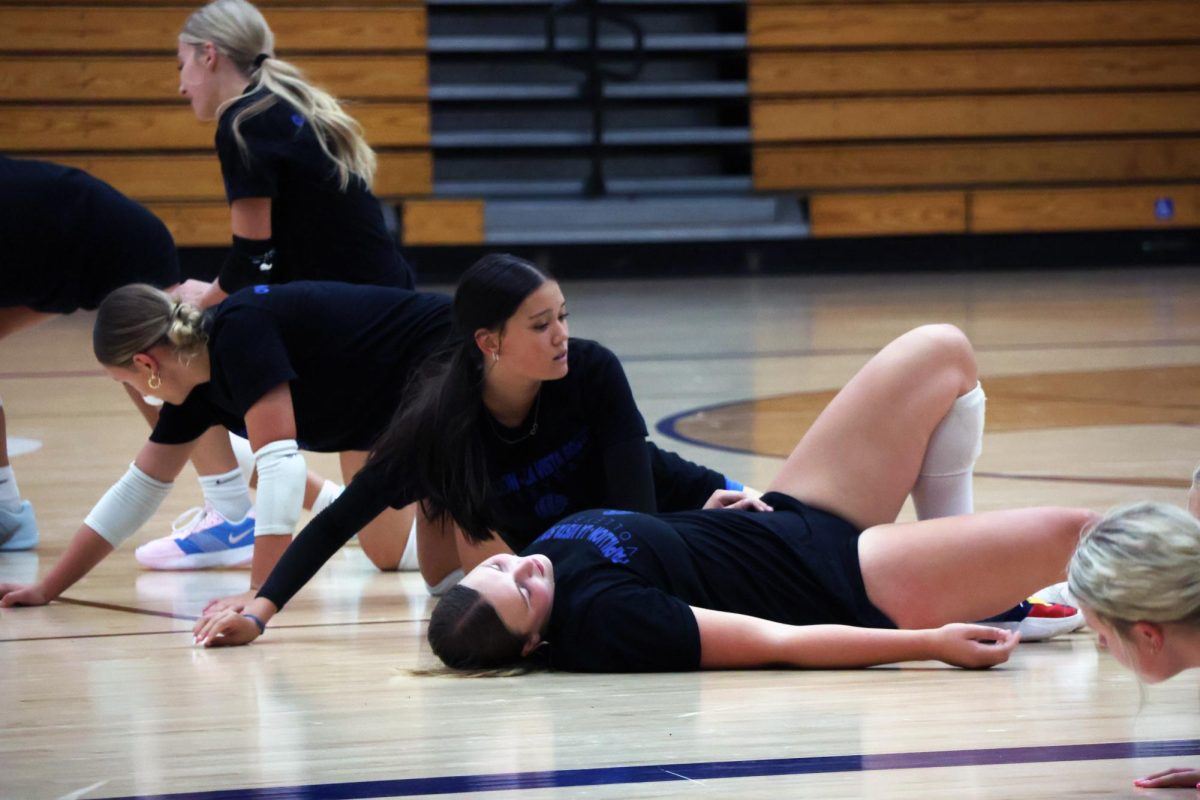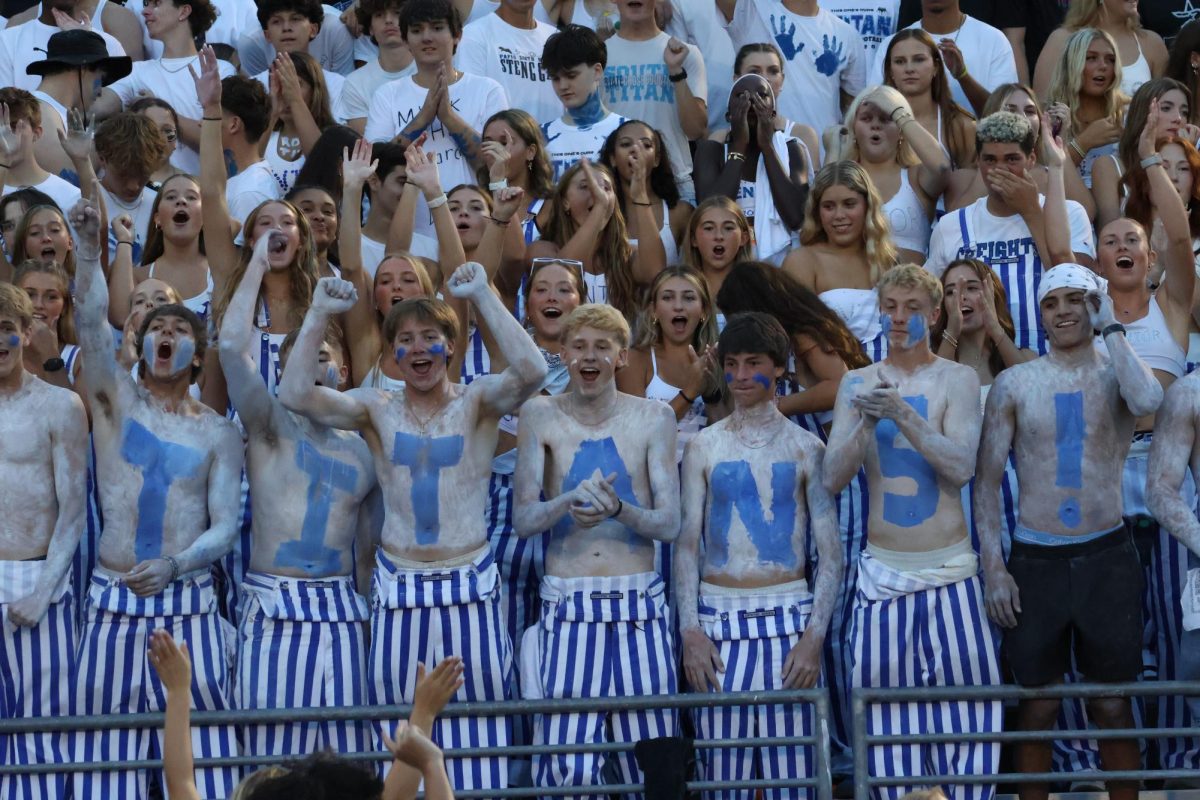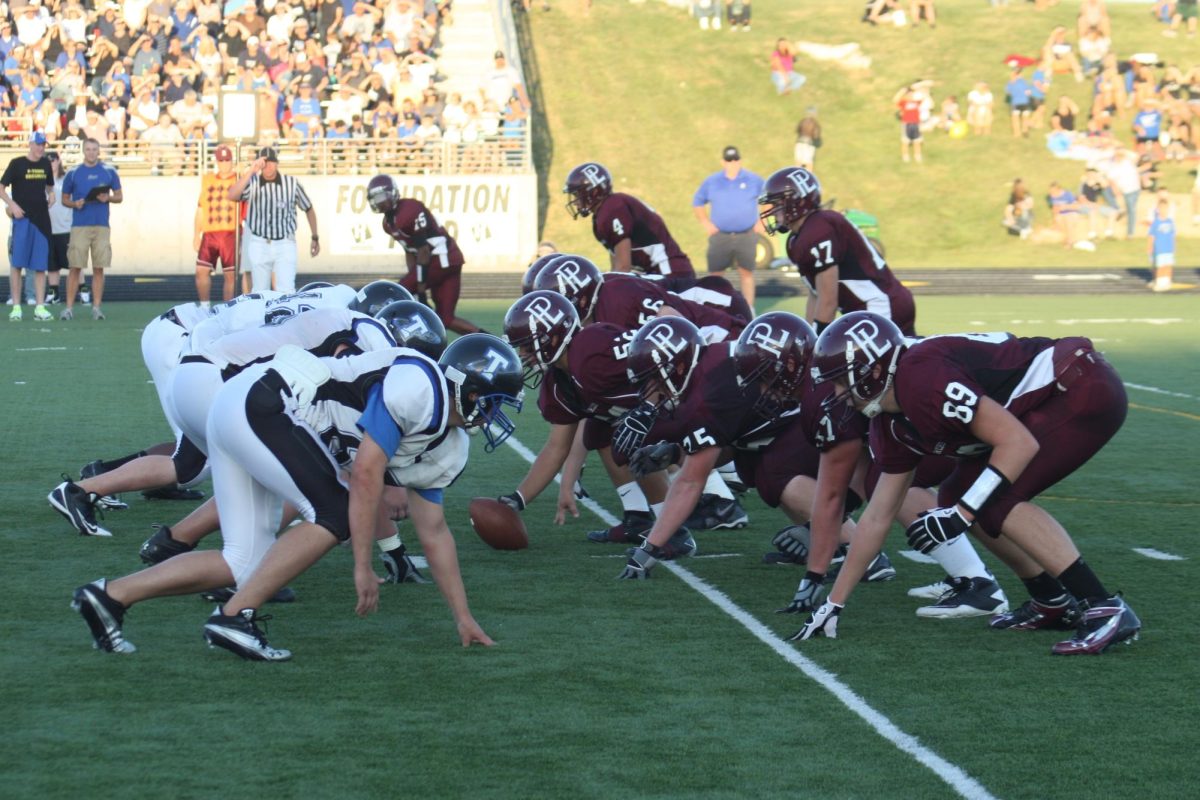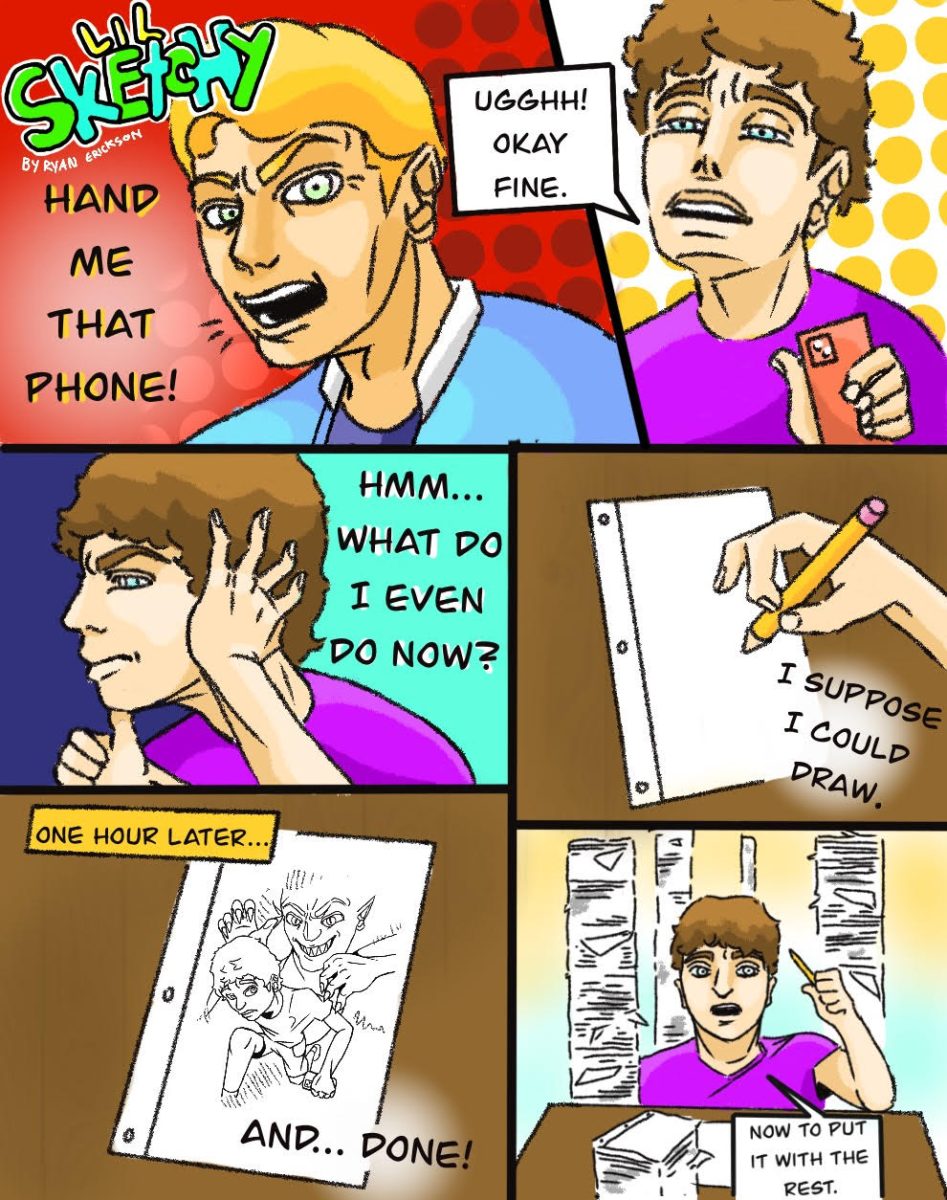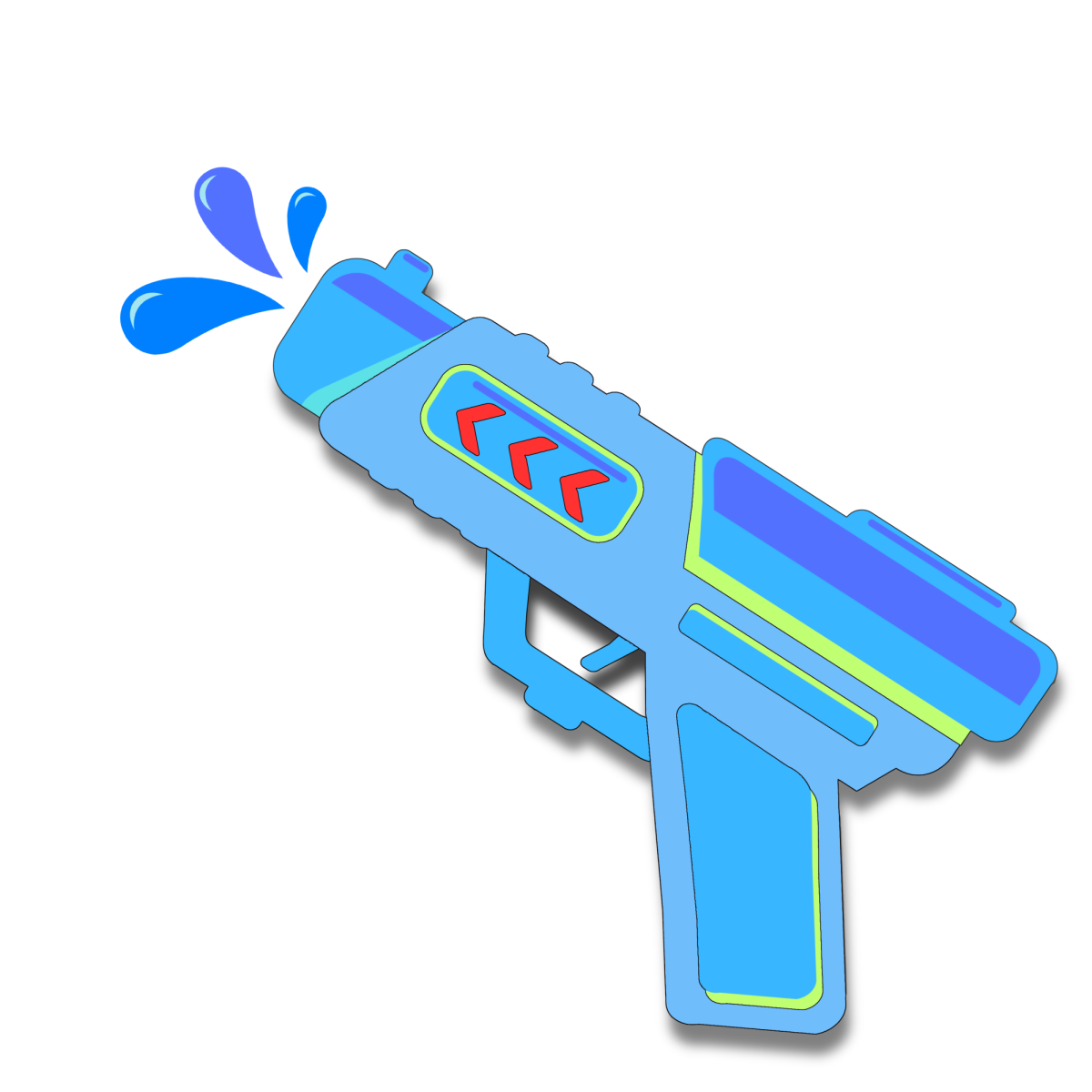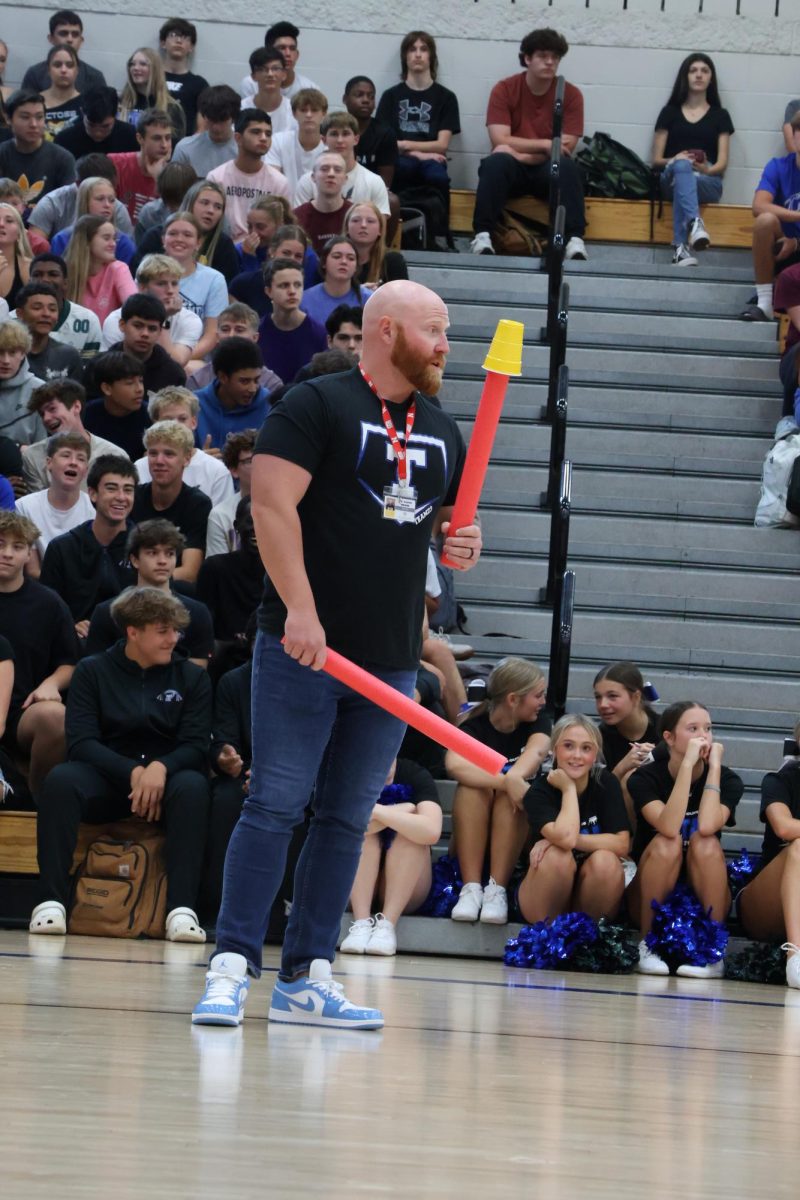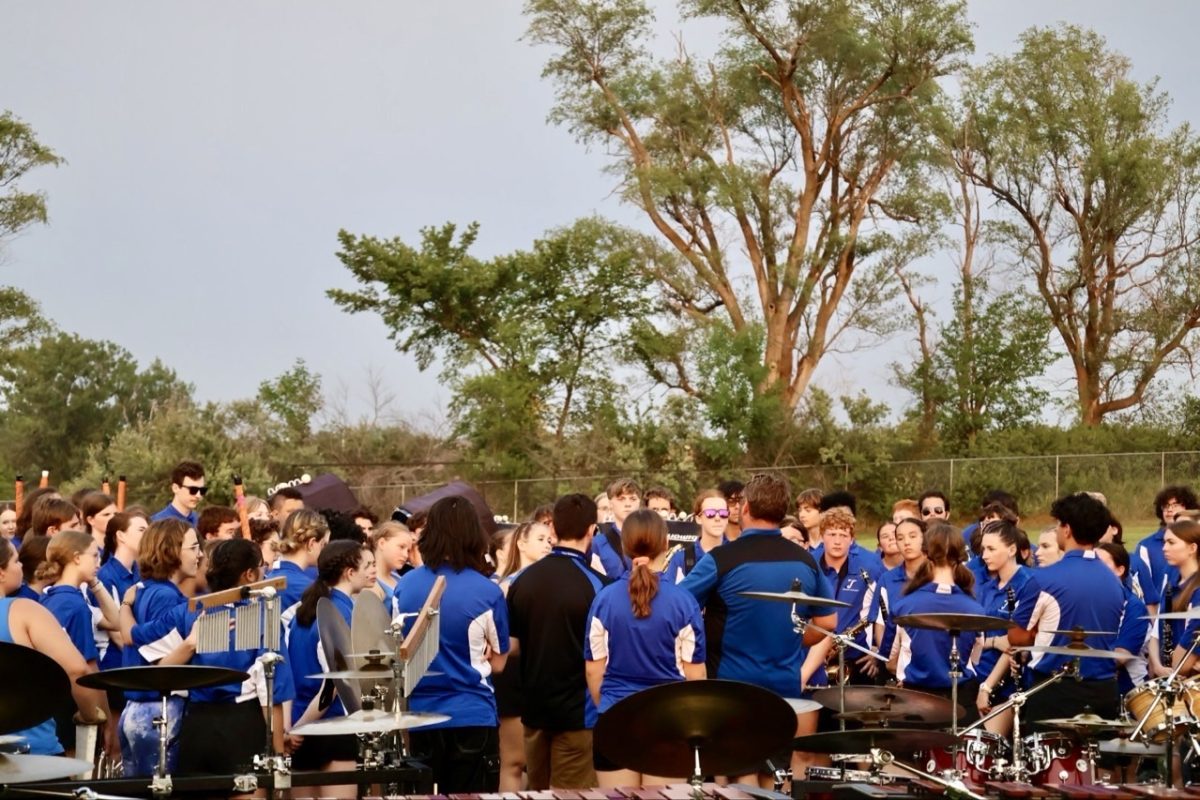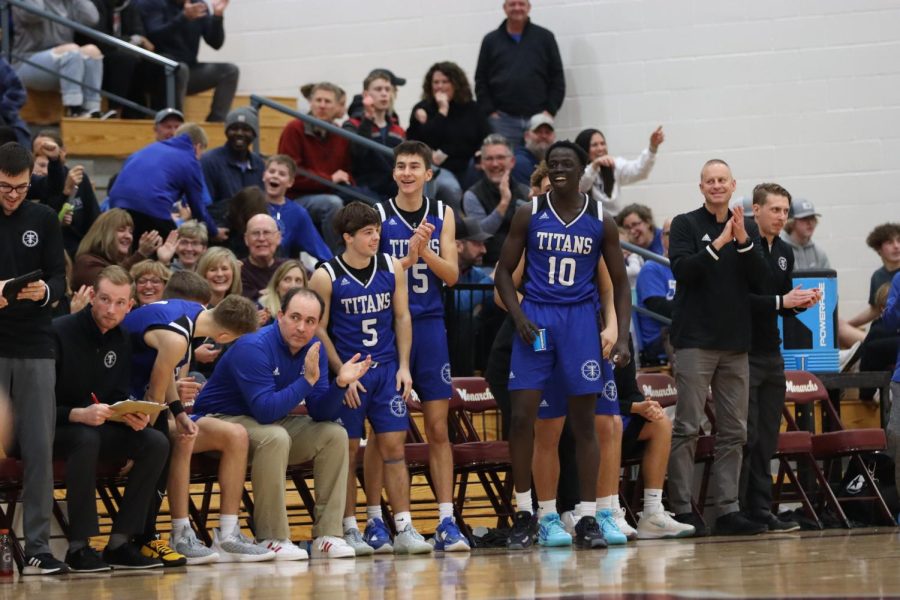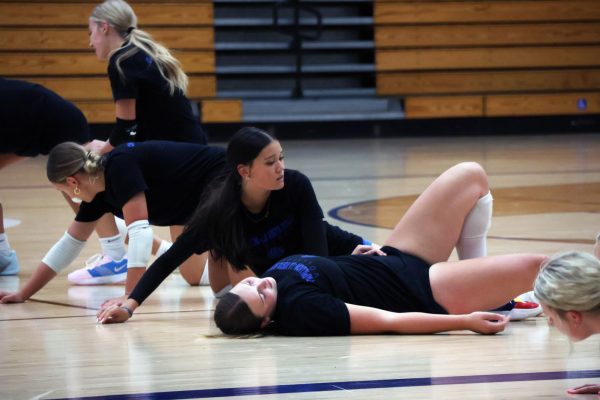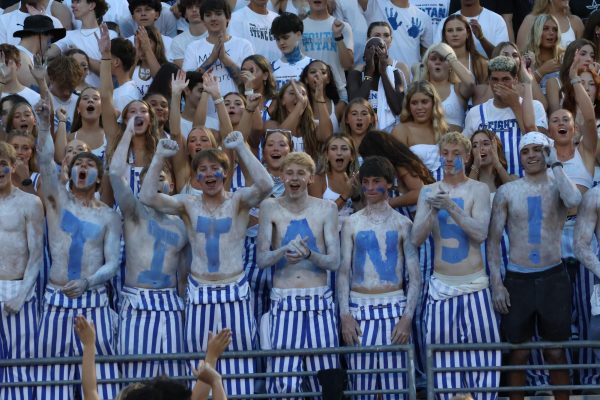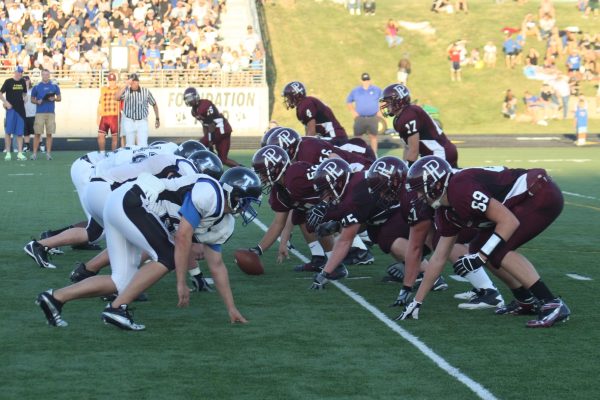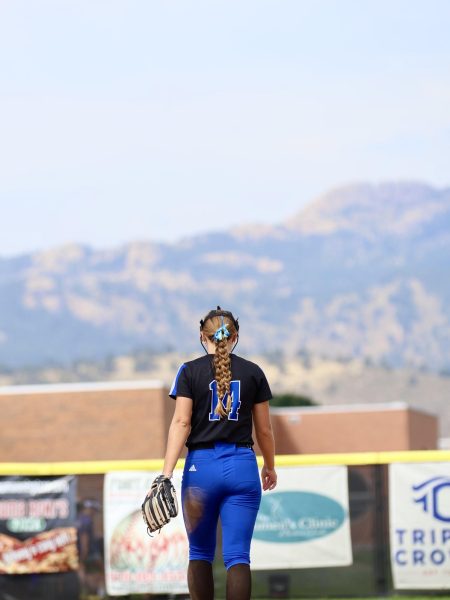Shoot! Score! The clock is ticking
The Titans celebrate after a score. They went on to win 65-36 against cross town rivals Papillion LaVista.
The clock is ticking for Class A basketball players. The shot clock has been added to Class A boys and girls basketball in the state of Nebraska, and according to PLSHS Activities Director Jeremy Van Ackeren, they were brought in to improve the pace of the game.
“I think … there’s a little more strategy involved,” Van Ackeren said. “If there’s a minute and a half to go in the game and you have a lead, you can’t run a minute and a half off the clock. You’ve got 35 seconds you have to work with. There’s strategy there.”
Even with the change, scoring and defensive strategy have stayed mostly the same, according to Van Ackeren.
“I don’t think the scoring has increased because of it,” he said, “but it’s changed the game a bit with how you manage the game, the strategy, and those types of things have changed.”
Girls varsity Coach Andy Gerlecz said he had not seen many major adjustments with the addition of the shot clock in relation to offense and defense. However, there have been adjustments in practice to account for late clock execution.
“It forces our players to make plays,” the girls coach said. “In other words, they have to be able to go score and get a good shot. Whereas before, if you aren’t rushed, you can reset offense. So I think it really helps our players to become more skilled.”
Boys varsity assistant Coach Joe Cooley said he believed the shot clock created more late clock situations, which has made the game more challenging than in seasons prior. Late clock situations are plays that occur in the final minutes in each of the four quarters played.
“What’s nice is, before the shot clock, late clock situations only came four times a game… So there’s certain things we want to do,” Cooley said.
The shot clock is set at 35 seconds for NSAA varsity level basketball in Class A. A shot clock violation occurs when the team on offense still has the ball anywhere on the court after that 35 seconds. In this case, possession turns to the opposing team. In college, the shot clock is 30 seconds. The proposal for shot clocks was put together by multiple Class A activities directors to prepare players for the next level.
“In college, they all have them,” Van Ackeren said. “So for kids that want to play college basketball, the transition would be easier, using the shot clock in high school, and then having to go to college.”
In college basketball and professional basketball, the shot clock has a shorter time amount. According to Gerlecz, having the shot clock this early in a basketball career provides a big boost to high school players.
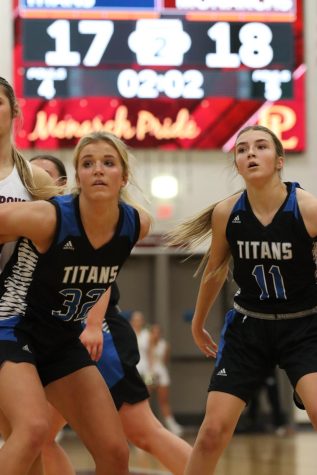
“I think it makes the game a lot more mature to watch, and I think it helps prepare our players for college basketball,” Gerlecz said.
Senior basketball player Jack Wallace spends about 12 minutes a game on the court every game, averaging 11.7 minutes played per game. According to Wallace, finding a quality shot can be difficult with only 35 seconds to score.
“In the past we could just reset and take our time, but now we have to find a good shot within the shot clock – which can be a challenge during stagnant possessions,” he said.
The Titans like to run the floor in transition and play quickly and efficiently. The shot clock creates more possessions for them to do so. However, many teams play this way.
“Teams are now getting more possessions than they had in the past, and that brings more shot attempts and offensive opportunities,” Wallace said. “We try our best to push the pace and get early transition points so we don’t need to worry about a shot clock violation.”
The shot clock also helps the team defensively. Before shot clocks, possessions could stretch out.
“It benefits us on the defensive end knowing we don’t have to guard for a long period of time,” Wallace said.
Teams are figuring out how to manage and execute without getting shot clock violations. They also are adjusting the pace of play.
Your donation will support the student journalists of Papillion-La Vista South High School. Your contribution will allow us to purchase equipment and cover our annual website hosting costs.

Hello everyone! My name is Michael and I am a senior Co-Editor-in-Chief for the Titan Legacy magazine. This is my second year in this position, and my...

Hello! My name is Paige Miller. I’m a junior, and this is my first year on staff for Titan Legacy and South Star yearbook. I do photography, writing,...


![Pictured above is a structure that displays the names of Nebraska Vietnam veterans in order to “honor [their] courage, sacrifice and devotion to duty and country.”](https://plsouthsidescroll.com/wp-content/uploads/2025/10/Trey_092625_0014-e1760030641144-1200x490.jpg)



